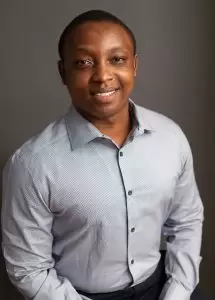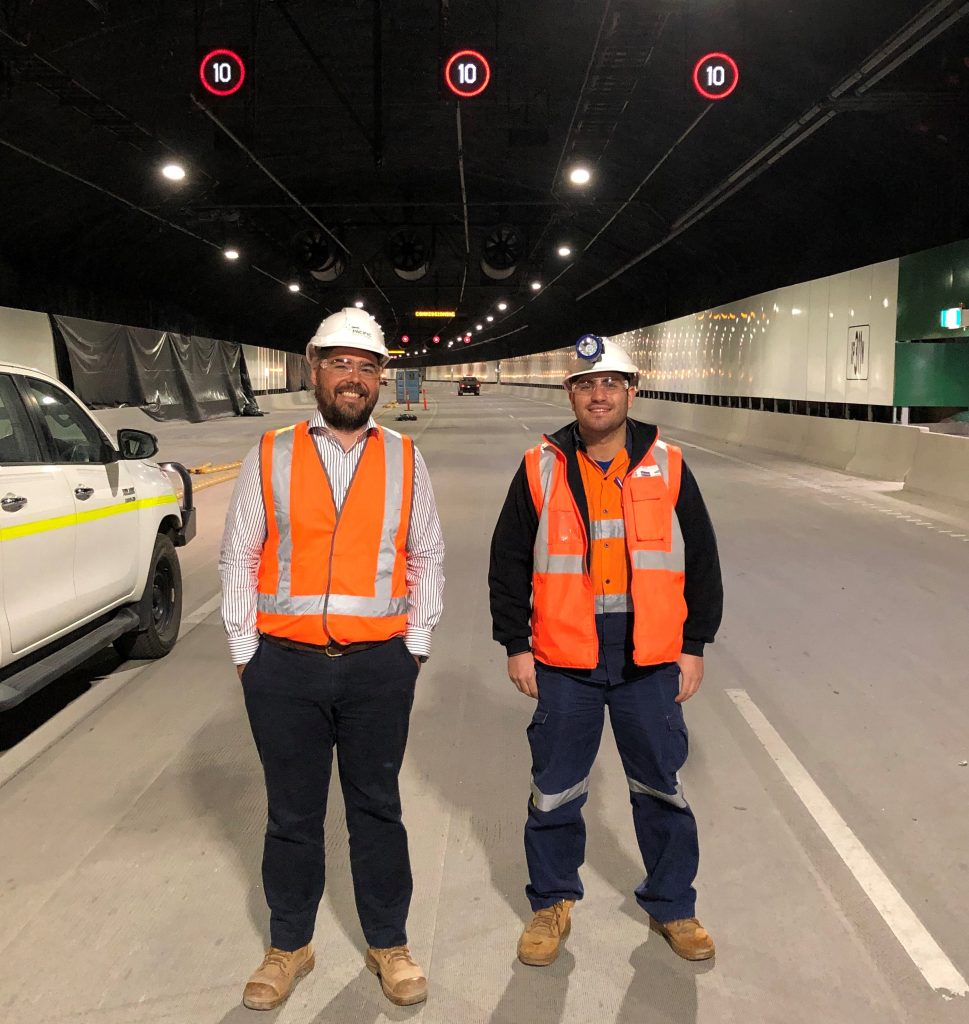When structural engineer Alyaa Ahmed arrived in Australia four years ago, she had a decade of experience designing apartment buildings in Egypt and Kuwait.
Her partner — an electrical engineer — was able to get work. After all, electricity is the same the world over.
But Ahmed found it very difficult.
“In the Middle East, the majority of the structural engineers are using concrete in the buildings,” she said.
“But here, most of it is steel. So I couldn’t find any jobs [with] my experience.”
Ahmed felt like she was forced to start her career again as a fresh graduate.
“That was challenging to cancel all my 10 years’ experience and start from scratch again,” she said.
It took her two years to find work, eventually landing a role as a steel detailer at Strangio Structural Steel. While still not using her engineering degree, she’s grateful to be in an Australian workplace.
“They ask us for local experience, and we don’t have the option to [do] even unpaid training,” Ahmed said.
“If you are lucky, you will have a local company or a good project manager that gives you this opportunity to prove yourself. But this first step is very hard.”
More than half — 58 per cent — of Australia’s engineering workforce was born overseas, and the community benefits heavily from their collective expertise and contributions.
Migrants typically account for two-thirds of the growth in the engineering workforce each year, with the remainder university graduates.
Engineers Australia research has shown migrant engineers play an important part in strengthening Australia’ engineering workforce.
But despite Australia experiencing its worst-ever skills shortage, Ahmed is not alone. It takes overseas-born engineers longer to find employment in engineering.
They have a higher rate of unemployment and are more likely to be underemployed than Australian-born engineers.
Worst affected are overseas-born female engineers, who have almost three times the unemployment rate of Australian-born female engineers.
Hurdles and delays

Civil engineer Ian Mulekyo arrived in Melbourne on a 476 skilled migration visa with an engineering degree from the international campus of an Australian university.
He spent six months searching for a job without success, before moving to Sydney to study a master’s in water engineering.
Mulekyo finally graduated — and then COVID-19 hit.
His skilled migration visa also proved problematic, with most companies only wanting to hire permanent residents or citizens.
Even though Mulekyo was allowed to work for 18 months, employers either didn’t understand the visa or didn’t want to take the risk.
While finishing his master’s, Mulekyo found support through Host International.
“They kept on sending us emails of potential employers,” he said.
“That’s when I started learning about the hidden job market.
“I slowly stopped looking for the big companies and started looking for companies that were growing.”
Mulekyo ultimately moved to the Sunshine Coast to take a role with Colliers Engineering and Design.
Mulekyo, who grew up in Kenya and studied in Malaysia, also took time to understand communication differences in Australian workplaces.
“Writing an email … where I come from it’s, ‘Dear sir, madam’,” he said.
“When you come to Australia, you first start with ’hi’. You come to realise that even ‘hi’ is just as respectful. It shows that … someone can have a chat with you. That’s one of the key things that I came to learn later on.”
Giving back
Civil engineer Tomaz Jimenez worked in construction in Brazil for nearly a decade before migrating to Australia, where he now works as a senior development associate with CIMIC Group’s Pacific Partnerships.
When he arrived in 2018, Jimenez noticed cultural differences in the way Australians manage infrastructure projects.
“They use more engineers but fewer technicians and ‘tradies’ than in Brazil, for example,” he said. “I had the support of a mentor to understand the dynamics of Australian workplaces.”
Jimenez decided to give back by becoming a mentor himself.
He started with an engineer from South Africa in 2019, and since joining Host International has mentored three other migrant engineers.
To his mentees, Jimenez highlights the importance of networking, providing more direct feedback, and seeking constructive feedback from their leaders at work.
He also finds Engineers Australia’s Construction Engineer Learning and Development Guide very useful for recent migrants to navigate the different roles on Australian construction projects.
For Jimenez, there have been benefits as a mentor too. He is currently working with an Afghan civil engineer who moved to Australia on a humanitarian visa.
“It’s very rewarding,” Jimenez said. “It’s such a pleasant way of spending [an hour a week or fortnight]: getting to know someone, understanding their challenges and strengths.”

Mentoring matters
Ginna Alvarez is hoping to capitalise on the experience of someone like civil engineer Tomaz Jimenez.
The environmental engineer arrived in Australia from Colombia two and a half years ago and is currently studying a master’s in environmental management in South Australia.
But Alvarez has struggled to find an entry-level role or part-time work in engineering while studying.
“I don’t want to keep trying and failing,” she said.
Alvarez is planning to do an unpaid internship and was recently matched to an Australian mentor through a partnership between Host International and Engineers Australia.
She wants to draw on her mentor’s experience to understand where she should start in the search for an engineering role.
Alvarez also hopes the mentor will help get her involved in the industry and improve her networking skills.
“I really will appreciate to learn from her how to start with a LinkedIn profile, how to navigate that to make new contacts,” she said.
“I really want to know how all the companies work. I want to learn tips on how to get a job, like [in] interviews.”




Hi EA,
Hi, Michelle Wheeler March 9, 2023. In reference to this article.
‘Migrant engineers struggle for work amid Australia’s worst skills shortage’
Thanks for the Posting. It is worth doing so.
Quite a bit of research has been carried out. Positively, the barriers have been identified, and the issues talked about is the world over, with Australia/NZ included. The other positive thing is that the Prime Minister, gov, colleges/universities, and lots of stakeholders do agree this is an issue that requires collaborative efforts from all stakeholders to resolve.
From my little experience of living back home and overseas, this issue can be solved. Everybody talks about it, we know the pending issues. maybe what is required now is, we collaboratively build diverse and engaging teams to put a practical implementation plan, accessible to all players,
and mandate these lead teams for a step-by-step tangible implementation strategy and report back on any progress made, where there is disagreement, we talk over the issues until resolved.
Every stakeholder must play his/her part for a successful resolution. Otherwise, we go around the circle. We build on current research and debates as a way forward.
I remember Victoria initiated a migrant skilled pilot program, where these professionals worked in selected companies, under the guidance of local experienced professionals. I applied for the program, but unfortunately, it was meant for migrant professionals living in Victoria. They got a chance to gain local experience. Guess what? most of them successfully got employed. Without a job, or working in any industry, one can not get a job. Of cause, there are certain private programs that charge about 3000AS$ or more to gain a 12-week local experience unpaid training program if one has the money.
The Greater Shepperton Region through LA Trobe University h( as similar programs. They ran a 6-week local experience training program for migrants once costing 500$. I also missed the program because of my work time schedule. Maybe I will be able to join the next program, when? I do not know.
Personally, I am prepared to relocate to regional/remote areas.
Hope all states run similar programs because they use hope. Currently, EA requested migrant
engineers to complete EOI Forms for a pilot program which might run between April-August. Hope for the best.
Thanks.
Clever
I know how difficult it could be I was in same situation 20 years ago in New Zealand nobody want give you a job and everybody asking for local experience. Eventually had do volunteer work on construction site which ended giving me a reference for job on Holcim
Australia is much blessed compared to NZ more projects more work
Fast forward 20 years I have my own civil construction company since last 2 years small but growing. World is on side of people who give it a go that’s all have learnt in last two decades .
All the best and happy to help in any shape or form.
This is frustrating. Skilled people are desperately required. Skilled migrants are having difficulties gaining employment. Solve it!